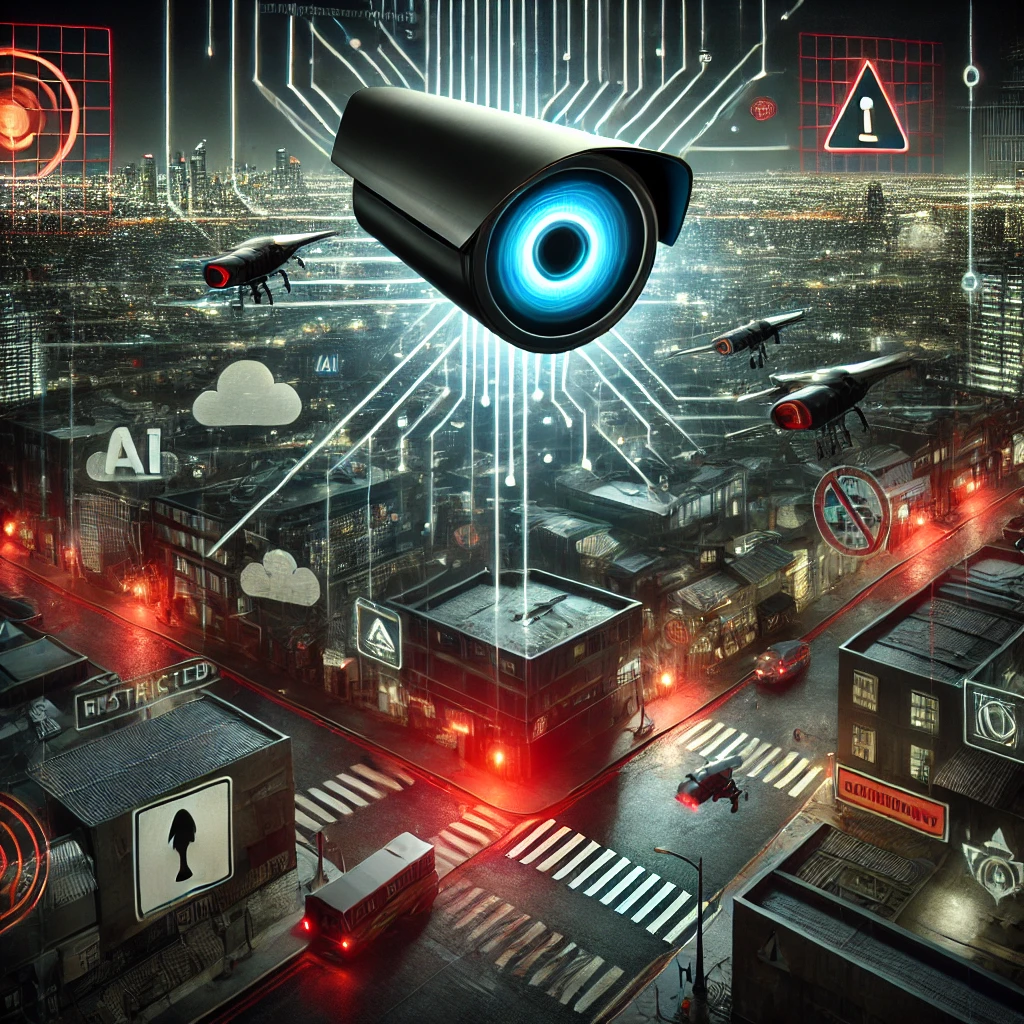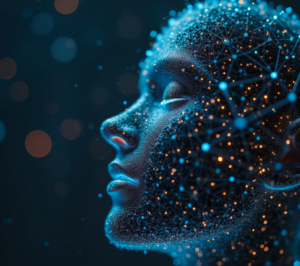
Explore the potential dangers and risks associated with artificial intelligence. Learn about AI’s impact on privacy, job markets, security, ethics, and human rights.
Artificial Intelligence (AI) has revolutionized various sectors by enabling automation, improving efficiency, and solving complex problems. However, like any disruptive technology, AI brings along not only transformative potential but also a dark side. From the erosion of privacy to job displacement, security threats, and ethical dilemmas, AI presents risks that require careful consideration.
In this article, we will examine the risks and consequences of AI technology, focusing on its impact on privacy, security, economic stability, and social dynamics. While AI promises innovation, it also necessitates responsible development and regulation to mitigate unintended consequences. By understanding the dark side of AI, we can better navigate the challenges it poses while maximizing its benefits.
The Erosion of Privacy and Data Security
AI technologies are driven by massive amounts of data. While data collection and analysis can improve user experiences and create innovative solutions, it also exposes individuals to privacy violations and security risks.
Data Mining and Surveillance
AI’s ability to analyze vast amounts of data is one of its defining features, but it comes at the cost of privacy. As companies and governments increasingly rely on AI to collect and analyze personal information, individuals lose control over their own data.
-
Surveillance: AI-powered surveillance tools, such as facial recognition, can be used for mass surveillance, enabling governments or private companies to track individuals’ movements, behaviors, and even predict actions based on their data. This level of surveillance could lead to invasive government monitoring, stifling dissent, and promoting a culture of control. In countries with authoritarian regimes, AI surveillance systems may be used to suppress protests, monitor citizens, and control political opposition.
-
Social Media and Targeted Ads: AI’s use in social media platforms creates an environment where personal data is collected without explicit consent, leading to the creation of highly accurate user profiles. AI algorithms can then target users with personalized ads, influencing purchasing decisions, political beliefs, and social behaviors. This manipulation of behavior can be subtle but powerful, particularly when individuals are unaware of how their data is being used.
Data Breaches and Cybersecurity Risks
With the increasing reliance on AI systems, the potential for data breaches has grown significantly. AI systems are often responsible for processing sensitive data in sectors such as healthcare, finance, and transportation, making them prime targets for cyberattacks. A compromised AI system could lead to significant financial losses, privacy violations, and a loss of trust in digital services.
-
Healthcare: AI is being used to diagnose diseases, predict health outcomes, and optimize treatments. However, if AI systems are hacked, sensitive patient data can be stolen, leading to not only privacy violations but also potential life-threatening consequences. In 2020, cybercriminals targeted hospitals with ransomware attacks that disrupted AI-assisted medical systems, compromising patient care.
-
Smart Cities: AI is playing a significant role in building “smart cities” that use data to optimize everything from traffic flow to energy consumption. However, the interconnected nature of smart cities increases the risk of a widespread cyberattack. If an AI-controlled traffic system is compromised, for instance, it could cause chaos on the roads, endangering lives.
To combat these risks, strong data encryption, cybersecurity measures, and ethical data usage standards must be implemented. Companies must also be transparent about their data collection practices and ensure individuals have control over their information.
Job Displacement and Economic Inequality
AI is rapidly automating tasks previously carried out by humans. While this automation has the potential to improve productivity and create new types of jobs, it also poses serious risks to the job market and could exacerbate income inequality.
Automation of Low-Skill Jobs
AI systems can perform repetitive tasks faster, more efficiently, and with fewer errors than humans, which makes them ideal for automating jobs in fields such as manufacturing, customer service, and logistics. Industries that rely on low-skill, manual labor are at the highest risk of automation.
-
Manufacturing: Robots powered by AI are replacing assembly line workers, performing tasks like welding, painting, and packaging. In the automotive industry, AI-driven robots have already replaced a significant number of human workers, resulting in job losses and a demand for workers with more technical skills.
-
Retail: AI-powered self-checkout systems are increasingly being deployed in retail stores, reducing the need for cashiers. Similarly, AI-driven customer service chatbots are replacing human representatives, especially in call centers.
The automation of low-skill jobs can lead to widespread unemployment, particularly for individuals who lack the education or resources to transition to higher-skill roles. This creates a widening gap between high-skilled workers who benefit from AI and low-skilled workers who face job insecurity.
The Skills Gap and Unequal Access
As automation accelerates, workers must acquire new skills to stay competitive in the job market. However, not everyone has access to the necessary training programs or educational opportunities. This leads to a skills gap, where certain segments of the population are left behind, further deepening economic inequality.
For example, the rise of AI has led to a high demand for data scientists, machine learning engineers, and AI specialists. But these roles require specialized education and training that is often expensive and inaccessible to many. As a result, there is a risk that AI could lead to a “winner-takes-all” economy, where those with advanced skills dominate the labor market, while others face long-term unemployment or underemployment.
Governments and organizations need to implement retraining programs that help workers adapt to the changing job landscape. Universal Basic Income (UBI) has been proposed by some as a potential solution to address the economic challenges brought about by automation.
AI and Security: Weaponization and Cyberthreats
AI’s potential to be weaponized raises significant security concerns. The military and intelligence sectors are exploring AI to enhance weaponry and autonomous systems, which can have far-reaching consequences.
Autonomous Weapons
The development of AI-driven autonomous weapons is one of the most concerning aspects of AI technology. Autonomous drones and robots could be used in military operations without human intervention, making decisions about who or what to target. While proponents argue that these weapons could reduce human casualties by carrying out missions more efficiently, there are significant risks involved.
-
Escalation of Conflicts: AI-driven weapons could be used to escalate conflicts without human judgment. For example, an autonomous weapon might misinterpret a situation and engage in combat when it shouldn’t, leading to unintended violence or the deaths of innocent people.
-
Ethical Concerns: Autonomous weapons could make decisions about life and death without human intervention, raising questions about accountability. Who is responsible if an AI system makes a mistake that results in the loss of life? The lack of human accountability in warfare raises profound ethical dilemmas that have yet to be addressed.
Cybersecurity Threats
AI is also being used by cybercriminals to launch sophisticated attacks. Malicious AI programs can learn from previous attacks and adapt to avoid detection by traditional security systems.
-
AI-Powered Malware: AI algorithms can generate highly sophisticated malware that targets vulnerabilities in software or networks. These AI-driven attacks can bypass firewalls and antivirus software, making it difficult to defend against them.
-
AI in Phishing and Social Engineering: AI can be used to create highly convincing phishing emails or fake social media profiles that manipulate individuals into revealing sensitive information. These attacks are more personalized and harder to detect than traditional phishing attempts.
The increasing integration of AI in cyberattacks necessitates the development of advanced AI-driven cybersecurity systems to protect against these new threats. Governments and organizations must also collaborate to establish global cybersecurity standards and frameworks to ensure AI technology is used safely and responsibly.
Ethical Issues and Bias in AI
AI systems are only as good as the data they are trained on. If AI is trained on biased data, the results can be discriminatory, perpetuating harmful stereotypes and inequalities.
Bias in AI Algorithms
AI systems have been found to exhibit biases based on the data they are trained on, which can result in discriminatory practices in areas like hiring, lending, and law enforcement. These biases can mirror societal inequalities, perpetuating unfair outcomes for marginalized groups.
-
Hiring Discrimination: AI recruitment tools, which analyze resumes and applications, have been shown to favor male candidates over female candidates when trained on historically biased hiring data. Similarly, algorithms used in criminal justice systems to assess recidivism risk can disproportionately affect minority groups.
-
Racial Bias: Facial recognition technology is another area where AI biases are evident. AI systems designed to recognize faces have been found to have higher error rates when identifying people of color, leading to potentially dangerous consequences in areas such as law enforcement and surveillance.
Ethical Dilemmas in AI Decision-Making
As AI systems become more autonomous, they are increasingly tasked with making decisions that have moral or ethical implications. Self-driving cars, for example, may need to decide how to act in emergency situations, such as whether to swerve and hit a pedestrian to avoid colliding with another vehicle.
- Moral Dilemmas: The “trolley problem” — a philosophical dilemma where one must choose between two morally difficult outcomes — is an example of the kinds of ethical decisions AI may need to make. These moral choices are difficult to program and raise questions about who is responsible for the consequences of AI decisions.
To address these issues, AI developers must prioritize fairness, transparency, and accountability when designing algorithms. It is crucial that AI systems undergo regular audits to ensure they are not perpetuating harmful biases.
Ensuring Responsible AI Development
While AI presents numerous risks, it also offers tremendous opportunities for improving lives. Ensuring that AI is developed and deployed responsibly is essential to mitigating its negative consequences.
Regulation and Oversight
Governments and international organizations need to establish clear regulations to guide AI development and deployment. These regulations should prioritize safety, privacy, and fairness, and ensure that AI technologies are not used to perpetuate harm.
Transparency and Accountability
Transparency in AI development processes is critical to maintaining trust. AI systems should be designed with mechanisms to explain their decision-making processes. Additionally, developers should be held accountable for the actions and consequences of the AI systems they create.
Ethical AI Development
AI developers should adhere to ethical guidelines that prioritize human values. This includes ensuring that AI systems respect human rights, prevent harm, and are inclusive of all people, regardless of race, gender, or socioeconomic status.
FAQs
-
What are the primary risks of AI?
- Privacy erosion, job displacement, bias in decision-making, security vulnerabilities, and the weaponization of AI.
-
How can AI compromise personal privacy?
- AI can track individuals’ behaviors and collect vast amounts of personal data, often without consent, leading to surveillance and privacy breaches.
-
What is AI bias and why is it a concern?
- AI bias occurs when algorithms are trained on biased data, which can result in unfair outcomes in areas like hiring, criminal justice, and lending.
-
Can AI be used in warfare?
- Yes, AI can be used to create autonomous weapons, leading to ethical dilemmas and concerns about the potential for AI to make life-or-death decisions.
-
What role should humans play in AI decision-making?
- Humans should oversee AI systems to ensure ethical decisions are made, especially in sensitive areas like healthcare, criminal justice, and military applications.
-
How can we prevent job displacement due to AI?
- Retraining programs and upskilling initiatives are essential to helping workers transition to new roles in a changing job market.
-
Can AI be trusted to make ethical decisions?
- AI can be programmed with ethical principles, but human oversight is necessary to ensure ethical decision-making, as AI systems are only as good as their training data.
-
What are the security risks associated with AI?
- AI systems are vulnerable to cyberattacks, which can result in data breaches, system manipulation, and disruptions in essential services.
-
How can we ensure responsible AI development?
- By implementing clear regulations, transparency in development, and ethical standards that prioritize fairness, safety, and inclusivity.
-
What is the potential for AI to manipulate people?
- AI algorithms can be used to influence behavior through targeted advertising, social media content, and even political manipulation, raising concerns about manipulation and control.



